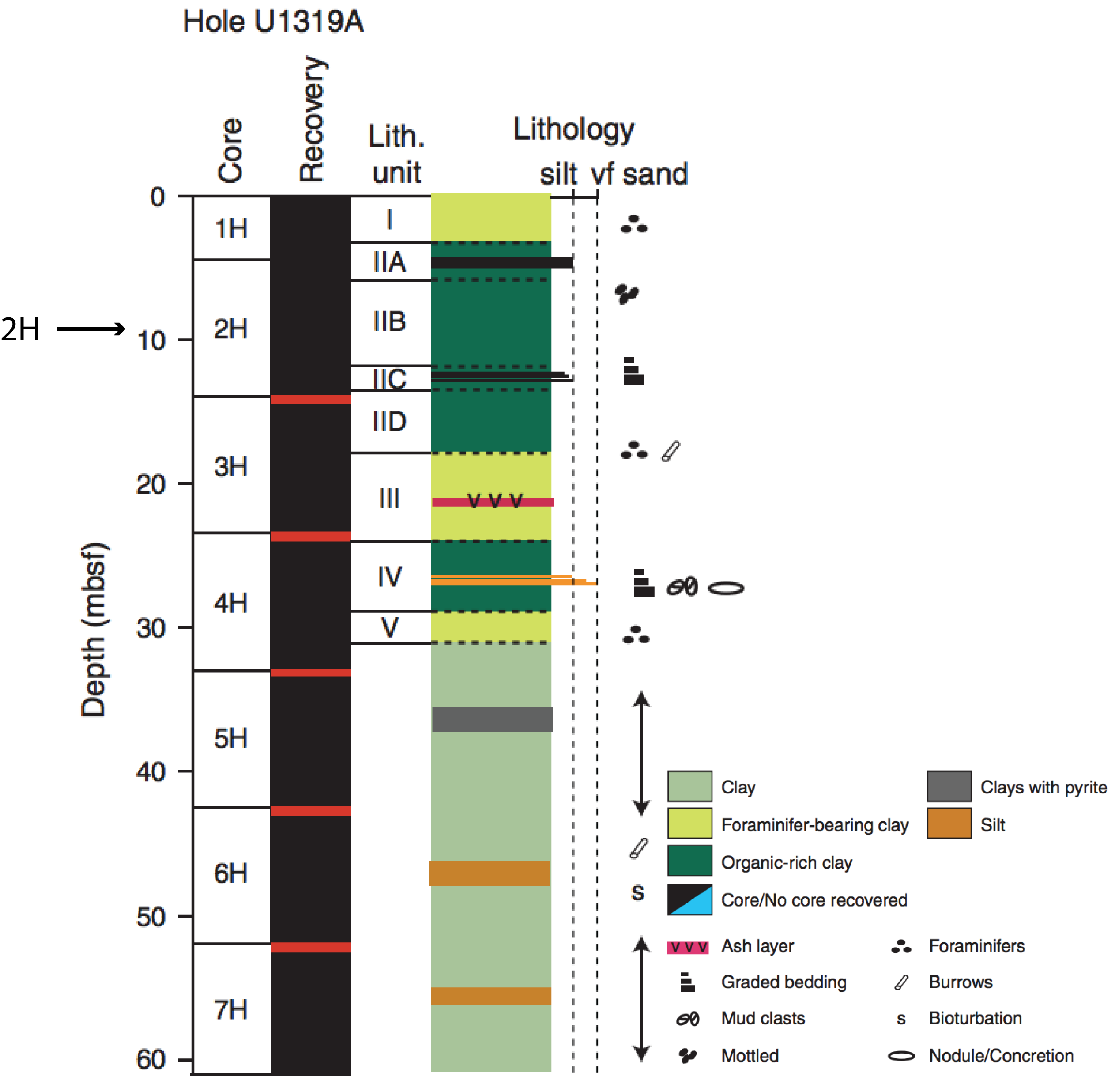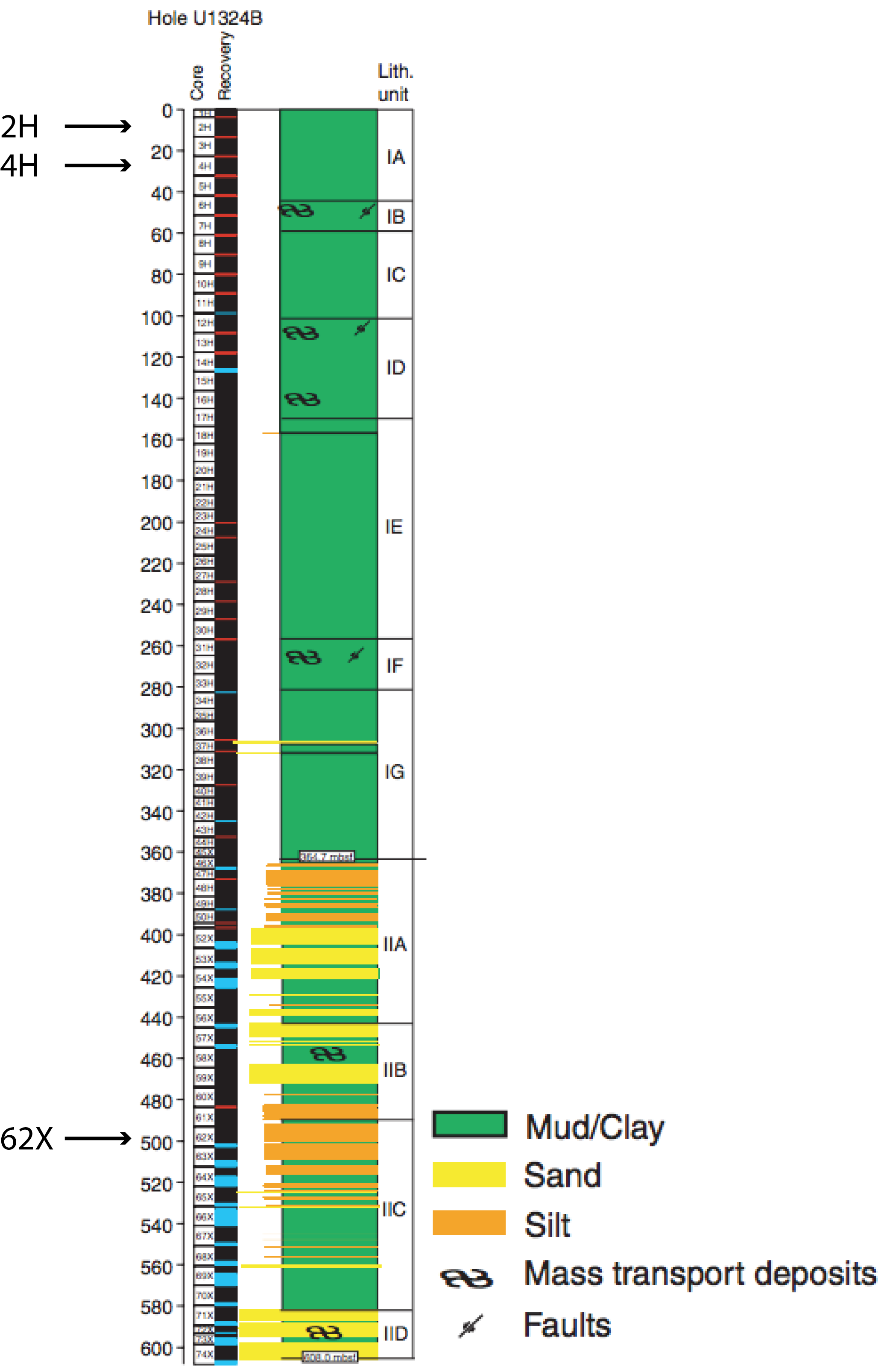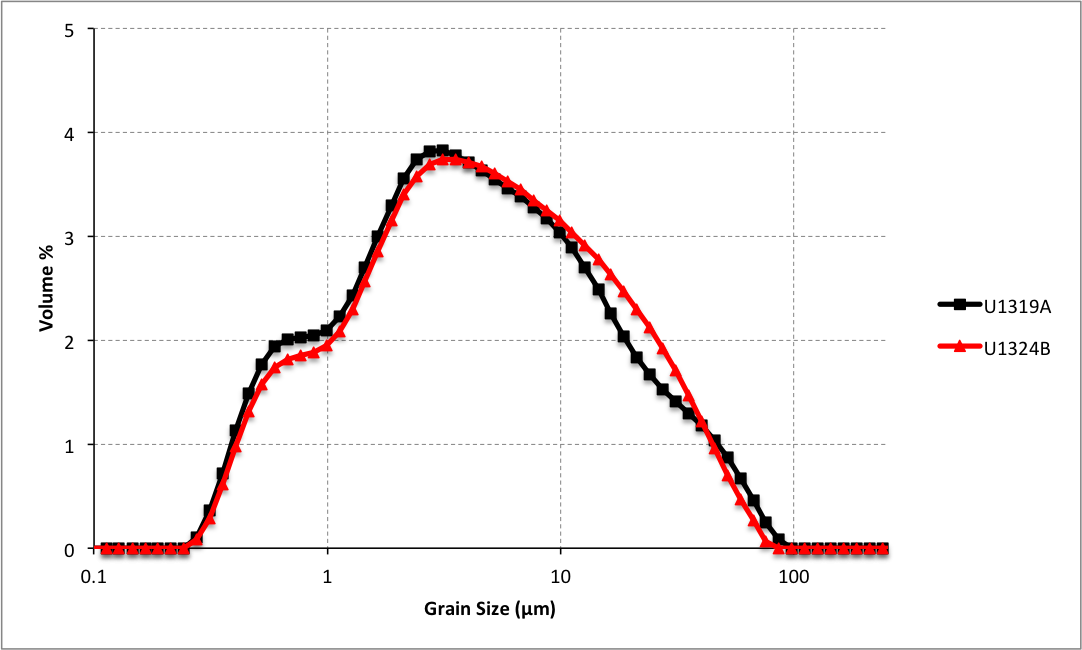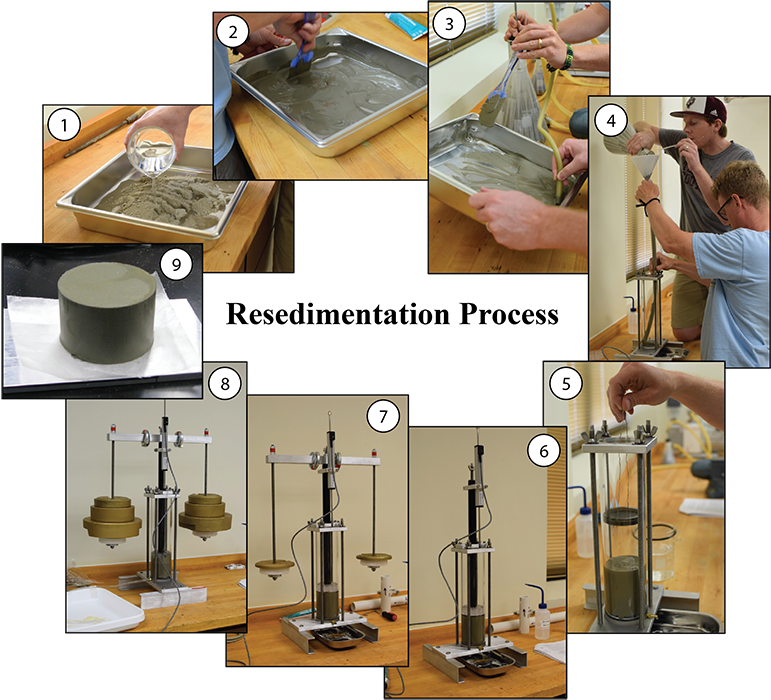Reports: DNI855617-DNI8: Effects of Microbial Activity on Mechanical and Transport Properties of Mudstones
Julia S. Reece, PhD, Texas A&M University
Marine mudstones can act as seals for hydrocarbons or even become unconventional reservoirs themselves. Micro-organisms that comprise many of these marine mudstones play an important role in early diagenesis and, thus, have a subsequent influence on reservoir development. In order to better understand the effects of microbial activity on mechanical and transport properties of mudstones, we will develop a detailed experimental program in which we will measure the changes in microstructure, permeability, porosity, compressibility, pore fluid chemistry, and microbiology due to the presence of bacteria during deposition and burial of mudstones.
Project year 1 involved gathering a team, acquiring and preparing samples, and setting up the resedimentation experiments. Doctoral student N. Tanner Mills was the first member to join in September 2015. J. Clayton Goodspeed and Mason Dillard are undergraduate students who helped with the experimental setup and the preparation of the samples for resedimentation experiments, respectively. Associate Professor Michael Tice has been involved in the planning of the resedimentation experiments using bacteria and the analytical tests investigating the pore fluid of the mudstone samples.
The natural mudstones we decided on for our project are from two sites in the Gulf of Mexico, offshore Texas and Louisiana. The two sites (U1319 and U1324) were drilled during Integrated Ocean Drilling Program (IODP) Expedition 308 in 2005 and the cores are stored at the IODP Core repository at Texas A&M University. We identified depth intervals at both sites that were claystones and silty claystones rich in iron content and organic matter (Figure 1). PhD student Tanner and PI Reece collected ~3kg of bulk mudstone material from Site U1319 and ~3.5kg from Site U1324. Tanner broke these mudstone samples into chunks, air-dried them, and then disaggregated them by using a mortar and pestle, and homogenized the material into one bulk mudstone powder per drill site. The grain size distributions for both bulk mudstones were measured by Tanner using the Malvern Mastersizer 3000 and are shown in Figure 2. Further sample characterization like mineralogy and plasticity will follow.
Figure 1: Lithostratigraphic summaries of IODP Holes U1319A (left) and U1324B (right) including core recovery and lithology (modified from Expedition 308 Scientists, 2006). The arrows on the left of each stratigraphic column indicate the core sections which we sampled for this research project.
Figure 2: Grain size distributions of bulk mudstones from IODP Site U1319 (black) and Site U1324 (red) measured with a Malvern Mastersizer 3000 based on the laser diffraction principle.
We aim to use the resedimentation technique to prepare our natural and homogeneous mudstone samples with and without bacteria. During this first year of the project, the resedimentation devices (Figure 3) were designed, custom-built, setup, and tested. We have not yet run a resedimentation experiment on the collected Gulf of Mexico mudstones. But we have performed a series of experiments on a different mudstone that we have plenty material of in order to test the setups and practice the procedure (Figure 3). Tanner Mills also worked on preparing a template for the processing and interpretation of the data acquired in the resedimentation experiments. These test runs have also aided in teaching other graduate and undergraduate students who will use this technique for different research projects.
Ongoing work determines whether the iron-reducing bacterium Shewanella oneidensis MR-1 will actually grow on our Gulf of Mexico mudstones and how likely it is for the different clays in the mudstones to act as a pH buffer. Once this is complete, Tanner will start the resedimentation experiments, first the control experiment without any bacteria followed by the mudstone inoculated with bacteria.
Figure 3: The resedimentation process as performed in the Sediment Mechanics Laboratory at Texas A&M University: 1) add water and salt to mudstone powder, 2) mix into a homogeneous slurry, 3) de-air slurry by applying vacuum, 4) pour slurry into consolidometer, 5) add first of a serious of weights, 6) add transducer, 7) keep incrementally loading the slurry with weights, 8) at maximum load (100 kPa), and 9) extrude the sample.
The ACS PRF grant has facilitated career development for the PI, graduate student, and also undergraduate students involved in the project. This work is a significant extension of the experience of the PI Reece in resedimentation and geomechanical behavior of mudstones. At the same time it is an opportunity to explore new interrelationships between geomechanics and microbiology on various scales. This grant enabled graduate student Tanner Mills to pursue a challenging independent research project while simultaneously completing coursework designed to aid in his research project and prepare him for a career in industry. He has gained valuable experience with the design and execution of difficult laboratory experiments that combine protocols from two different disciplines. Tanner has already connected with oil companies and will likely be able to complete an internship at some point during his PhD studies. He is also developing his communication skill set with a poster presentation of his research at the Department Research Symposium this past Spring, where he received 2nd place in the category PhD Anticipated Research, and at the upcoming American Geophysical Union Fall Meeting in December 2016. An additional benefit of this project is the involvement of undergraduate geology students who helped purchase materials, setup equipment, and prepare sediment samples. This provided essential support in the laboratory and also provided a hands-on opportunity for geology students at the undergraduate level to see what it takes to work in a laboratory and how graduate-level research is conducted. Clayton Goodspeed will graduate in December 2016 and has begun to make plans for pursuing a graduate degree in geosciences.
References:
Expedition 308 Scientists, 2006. Sites U1319. In Flemings, P.B., Behrmann, J.H., John, C.M., and the Expedition 308 Scientists, Proc. IODP, 308: College Station TX (Integrated Ocean Drilling Program Management International, Inc.). doi: 10.2204/iodp.proc.308.103.2006.
Expedition 308 Scientists, 2006. Site U1324. In Flemings, P.B., Behrmann, J.H., John, C.M., and the Expedition 308 Scientists, Proc. IODP, 308: College Station TX (Integrated Ocean Drilling Program Management International, Inc.). doi: 10.2204/iodp.proc.308.103.2006.















